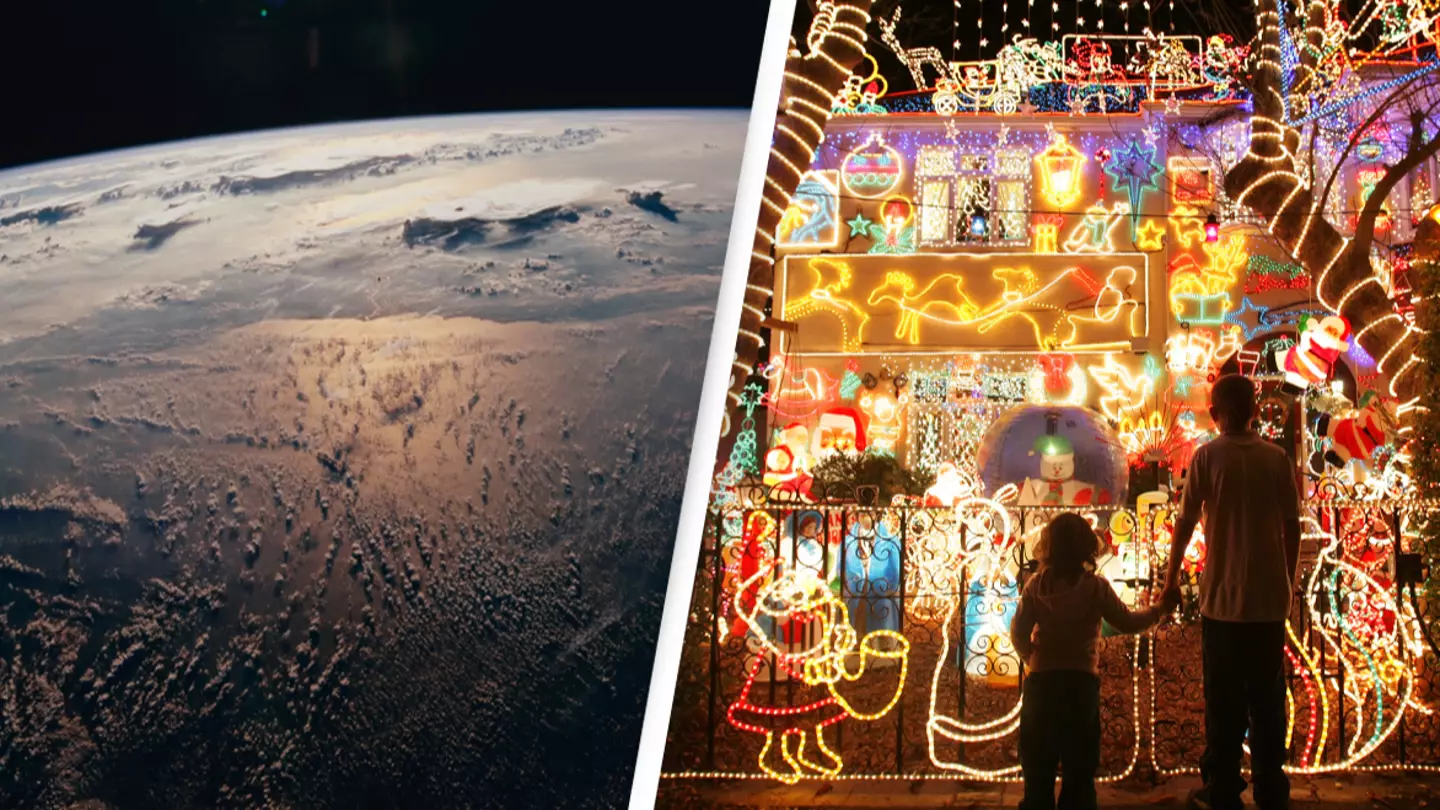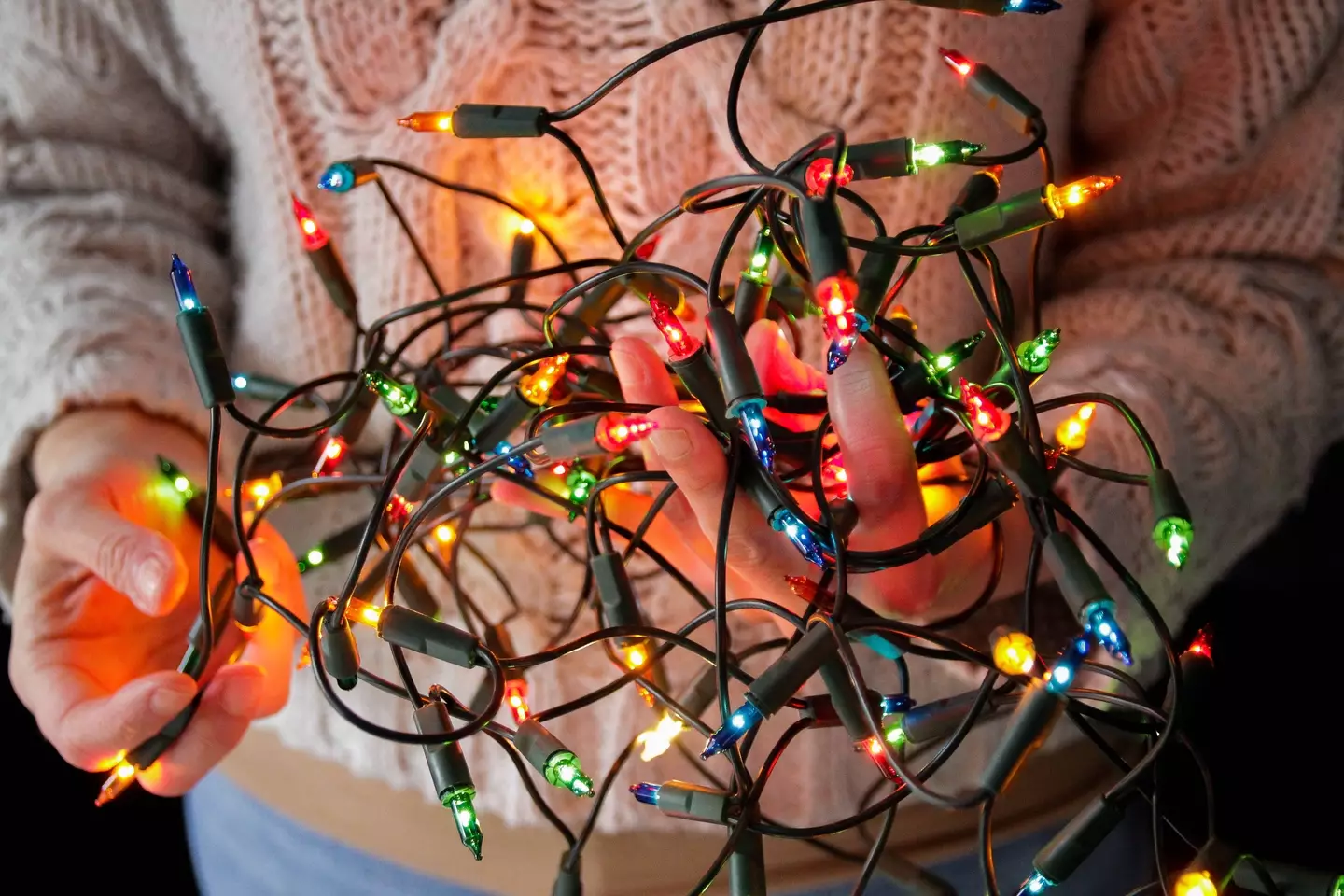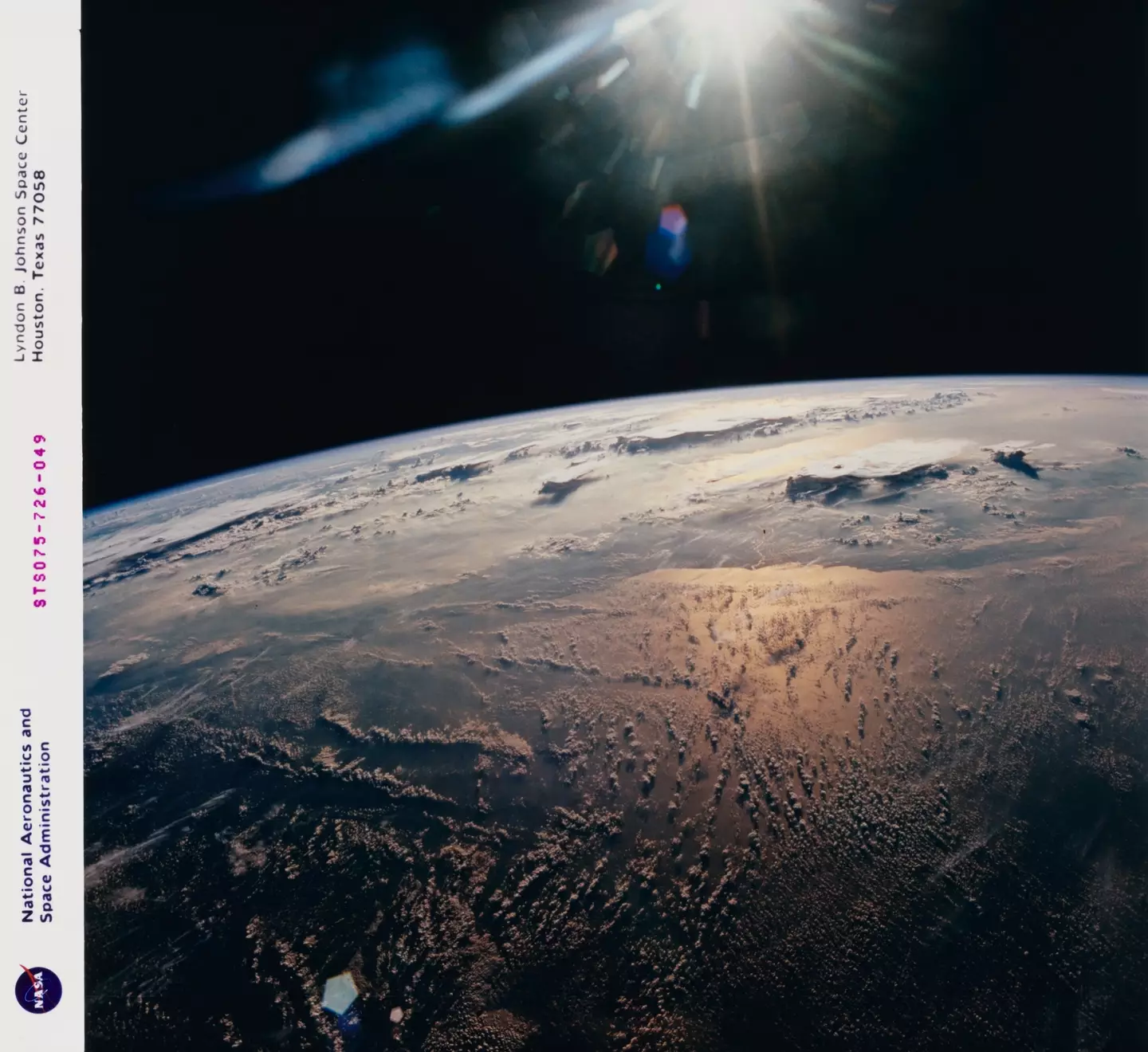
A group of physics students have calculated how many Christmas lights you would need to be visible from space.
It's something we've all probably wondered at some point.
And it's also something Ryan Bradley-Evans, Razzia Gafur, Ryan Heath, and Matthew Hough thought about when they were inspired by the 2006 movie Deck the Halls.
The movie sees Danny DeVito's character Buddy Hall using Christmas lights to make his house visible from space.
Advert
He does this when he discovers that he can't see his house on 'MyEarth', a fictionalised version of Google Earth.
Student Razzia said: “As scientists, we’re always looking for new ways to engage people in STEM and this paper is a prime example of how we can make science relevant outside of the lab/office."
It might seem like a daft question, but it actually requires a lot of thinking and consideration to come up with a proper answer.
There are a surprising number of factors. Firstly, where are you defining as 'space' starting?

For this occasion, the students from the University of Leicester decided that their starting point would be the orbit of the International Space Station, as a house is visible from this altitude.
Advert
There's also the factor of light pollution. Of course in the real world this would have an impact on the how may lights you would need.
However, this is obviously very dependant on where you live, so for the sake of simplicity the group decided to take it as though you are in an area with no light pollution.
Ryan said: “These values calculated are a rough approximation as we considered an ideal case based around the assumption of zero light pollution.”
So that's two considerations accounted for. But what about how bright one LED is?
Advert
Brightness is measured in 'apparent magnitude', and the faintest that we can see a star is an apparent magnitude of +6.5, or around 10,600 luminosity.

Still with us? Okay, so that's how much we need to be visible, now what's the apparent magnitude of a single LED light? It's about 4 luminosity. So, to get how many bulbs, we just divide 10,600 by four, to get approximately 2,650 Christmas lights.
Matthew concluded: “It would be possible to make your house bright enough to be seen from space.”
Advert
Ryan added: “Although we oversimplified the factors involved, it was great to see this beloved Christmas film hold up to the physics involved, as often this is not the case.”
That's 'oversimplified'?!
Now for a calculation of our very own. Online, you can buy a string of 100 lights for just under $20. To get enough lights according to our four scientists you'd need to buy 27 packs.
This means it would cost you around $540 to buy enough lights.
Advert
It might be less than you thought, but don't forget the electricity bills!
